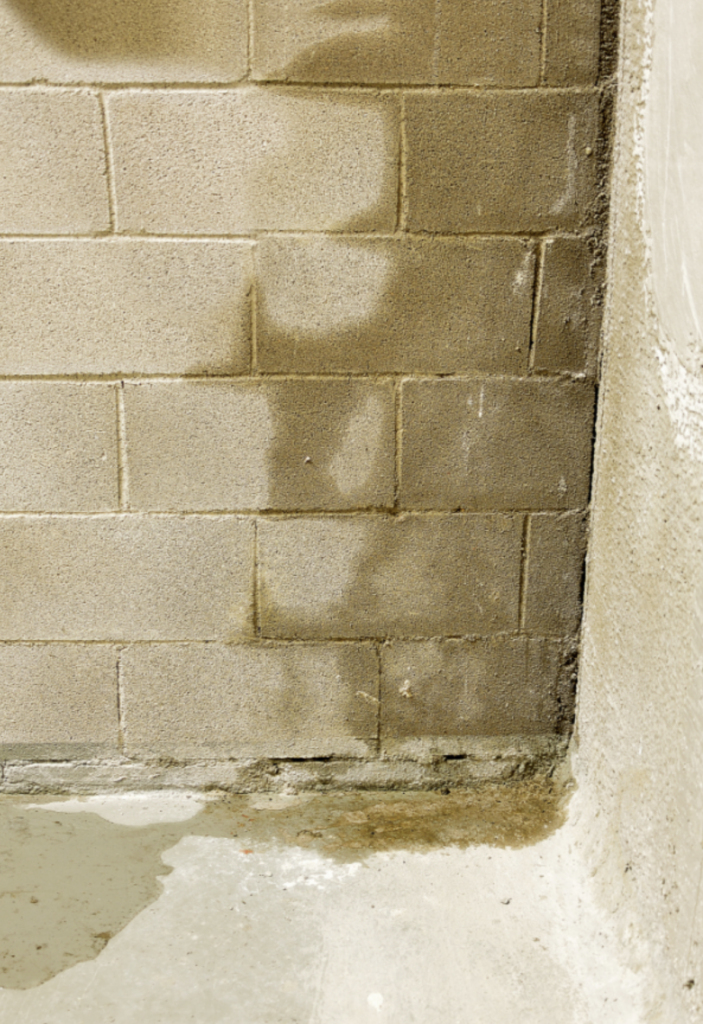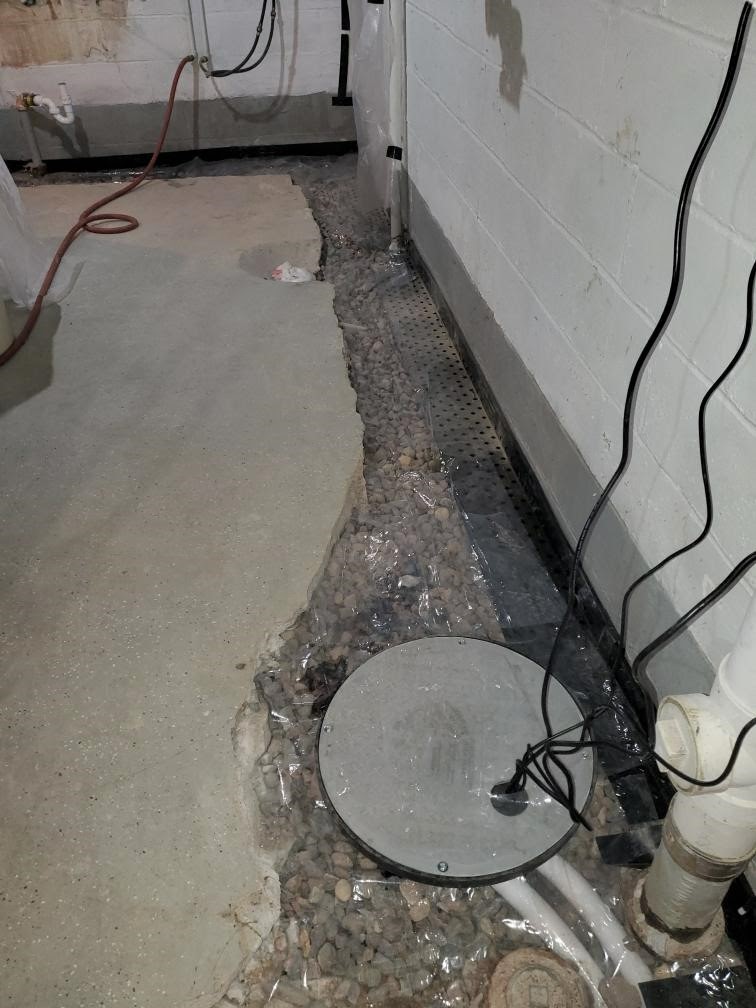
A flooded basement is certainly an inconvenience on your time, and most likely, your budget. However, the cost will vary depending on the root cause of the flooding.
Before you spend money to fix the problem, it’s important to take time to understand the cause of the flooding and determine if you can fix and prevent it yourself or if you need to engage a professional. Sometimes resolving the problem is relatively simple and cheap. This blog will address the steps to take if your basement floods to resolve the immediate problem and ensure it doesn’t happen again.
What to Do When Your Basement Floods
How to Stay Safe During Basement Flooding Repair
Before walking into a flooded basement, turn off the power in your home. If you’re not able to reach the circuit breaker without entering the flooded area, contact an electrician or your utility provider to shut it off. If you have electrical cords, outlets, or appliances in the basement, stepping into the flooded area could lead to electrocution.
How to Remove Water and Moisture From Basement
Once the power is off, remove the water. If your basement has a drain, clear it of any debris. If the water is only a few inches or less, a wet vac will suffice for removing the water. If it’s deeper, contact Standard Water Control to remove the water. Once you’ve removed most of the water, place towels on the floor to absorb the remainder then dry the basement with fans and dehumidifiers. Keep the dehumidifiers 6-8 inches from the basement walls.
Which Items to Throw Away
While the basement is drying, review the items stored in the basement to salvage what you can and toss what you can’t. Throw away anything that can retain moisture that was in the flooded area like drywall and cardboard. Holding onto such materials increases your basement’s likelihood of developing mold and mildew.
How to Clean a Flooded Basement
Hard surfaces can be cleaned with water and bleach to prevent mold and mildew growth. Use one cup of bleach for every gallon of water.
How Do You Find the Source of the Flooding in a Basement?
What to Look for Outside Your Basement
Before checking the basement, review your home’s exterior. Are your gutters and downspouts clean and functioning properly? Remove any debris and ensure the downspouts are connected properly and extend at least six feet from the foundation wall. Also, check the direction and degree of the slope of your home. It should slope away from your home at least one inch per foot for at least six feet from your home. If one or both of these criteria are not met, you may have identified the source of the flooding. Still, check inside to be sure.
What to Look for Inside Your Basement
What to Look for On Your Basement Walls and Floor
The porousness of concrete walls makes them more prone to leaking. Look for damp streaks along your wall. They are often near pipes, window corners, and any other points of intrusion. See if your walls and/or floor have cracks, holes, or divots. For concrete-block walls, there may be holes where mortar is missing between blocks or at a missing corner of a block. Also check for water between the mortar joints. For poured-concrete walls, look specifically at the wall-ties for protrusion.
What to Look for On Your Window Well

The window well may also be the source of flooding. Look for any pooling water on your window well. If there is pooling, the window well contributed to some or all of your basement’s flooding. This can happen because of a lack of upkeep, improper installation, an incorrect window size, lack of a cover, or incorrect cover size. Check the drain as well. It should be free of any debris or gravel.
What to Look for On Your Drain Tile
If you have drain tile, be sure it’s not obstructed or collapsed. If you don’t have drain tile, you may need to explore having it installed, which we’ll get to when we address how to properly waterproof a basement.
What to Look for In Your Sump Pump
If your sump pump doesn’t function properly, it can cause your basement to flood. To make sure it’s working, start with the valve. It should be fitted correctly, removed of any debris, and pointing away from the pump. Next, check the float to make sure it also doesn’t have any debris. If the valve and float are working as expected, move on to the power supply. The fuse, circuits, and wiring should not have any breaks or glitches. After you’ve confirmed the power supply is working, look at the impeller. It should be clean and debris-free.
How Do You Waterproof a Basement?
We are often asked, “Can you fix a leaky basement from the inside?” The short answer is, “Yes.” Once you’ve identified the source of the flooding, it’s time to explore basement flooding solutions. Because Standard Water is committed to your long-term peace of mind, we don’t recommend do-it-yourself solutions to waterproofing your basement, which are typically short-term fixes. However, we understand that may be your preference right now, so are providing some DIY guidance for how to stop basement flooding in addition to our recommended solutions.
How to Fix Your Wet Basement Walls and Floor
For starters, make sure your gutters are directing water away from your home and that the ground is sloped properly, to keep water from flowing toward your basement walls. This of course is just part of the solution. If you have cracks in your foundation, it is possible to install Carbon Fiber Straps to prevent the wall from bowing further. If it bowing too much, you may need piering which may also require a structural engineer. Regarding carbon fiber straps, Standard Water can install in just a day and it’s non-invasive. Here’s how we do it:
- Determine if urethane or epoxy is the appropriate material to keep water out based on the crack’s severity.
- Grind down the wall for the material to adhere properly.
- Drill holes in the crack for the ports to receive the repair material.
- Spread epoxy across the repair area to keep repair material in the crack.
Sometimes homeowners will think that by injecting a crack with foam or epoxy that they can keep water out of the basement. This may work in the short term, but a system needs to be put in place to control the water. Typically this involves installing interior drain tile and a sump pump. It may also involve installing delta board on the inside of the basement walls so that should water come through a crack, it can be directed into the drain tile. Click here for more details.
How to Fix Your Window Well
For the DIY solution, simple maintenance of your window well may be enough to prevent flooding. Regularly clean the drain and gravel. If you notice excessive amounts of muck in the gravel, you can remove it, wash it, and put it back or replace it altogether.
Standard Water recommends our Egress Window installation. In addition to the window well, our installation includes a well cover and rock drainage around, under, and in the window well to prevent water intrusion. Installing the Egress Windows is also done in a day with limited disruption to your home:
- Excavate the installation area by hand to prevent damage to your home.
- Cut the hole for the window.
- Secure the window and backfill it with gravel to provide drainage.
- If you have an existing drain tile installed by Standard Water, we will connect it to a pipe in the window well.
Contact us for a free consultation and/or quote. We are the best egress window company in Minneapolis and the surrounding areas including western WI!
How to Fix Your Drain Tile
For the DIY solution, simply remove the obstruction from your drain tile. If the drain tile is collapsed, you will need a contractor to fix it.
Standard Water recommends a rigid PVC interior drain tile system to ensure long-term water prevention in your basement. See our blog on Why You Should Choose PVC Drain Tile for more about the benefits. Similar to our other solutions, installation is quick and great care is taken of your home:
- Dig trenches.
- Drain water from foundation blocks.
- Install rigid PVC pipe.
- Install our patented drainage technology.
- Install moisture barrier.
- Install Superior Sump Pump System and cement over the tile.
Sump Pump
For the DIY solution, if you’ve cleared all debris and it’s still not working, you need to replace the sump pump.

Standard Water will replace your sump pump with our Superior Sump Pump System, which we believe is one of the best basement waterproofing products on the market. We typically install two discharge pipes to add a battery backup pump system now or anytime in the future.
Do You Want to Deal with a Flooded Basement Again?
As you now know, there are plenty of causes for a flooded basement as well as solutions to fix it and prevent it. Whichever solution you need and choose, we hope this is the only time you have to deal with it. If your flooding wasn’t caused by gutters, downspouts, or the slope of your home, the best way to ensure you don’t have this problem again is to hire professionals. Standard Water is a waterproofing company in Minneapolis that has been keeping basements dry for happy homeowners for more than 45 years. Get a free consultation and/or quote today!
